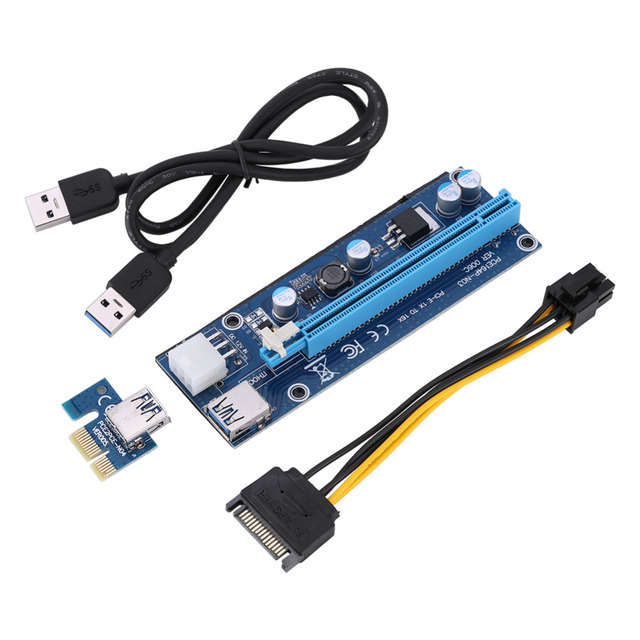
USB 3.0 PCI-E Riser Adaptor
Check my rate
| Main centres: | 1-3 business days |
| Regional areas: | 3-4 business days |
| Remote areas: | 3-5 business days |

| Main centres: | 1-3 business days |
| Regional areas: | 3-4 business days |
| Remote areas: | 3-5 business days |
This adaptor connects a PCIe x16 card (like a GPU) via a PCIe x1 motherboard slot using a USB3.0 cable as an extender. Often paired with a SATA or 6pin power input to supply GPU voltage and stability
Interface Compatibility: PCIExpress 1.0/2.0; supports x1, x4, x8, x16 on slot side and x1 host-side
Data Rate: Max ~5Gbps (USB 3.0 bandwidth), roughly equal to PCIe 1.0 x1 (250MB/s)
Power Delivery: Supported via SATA 15pin or 6pin PCIe input on riser board; some even include Molex or dual power options
Capacitors: Typically equipped with 4 solid-state capacitors to ensure voltage stability under load
USB Cable Length: Usually ~5560cm (spec extensions up to ~3m possible, but greater chance of signal integrity issues)
Riser Board Dimensions: ~130×43×15mm (e.g., DELock design)
Connector Surfaces: Gold-plated contacts for improved durability and signal conduction
USB 3.0 Standard: Uses SuperSpeed protocol @5Gbps with standard TypeA plugs
PCIe Standard: Backward-compatible with PCIe 1.x and 2.x links; behaves electrically as a PCIe 1.0 x1 link
Plug-and-Play: No drivers requiredsimply insert card and power it
| Feature | Typical Value |
|---|---|
| Host Slot Support | PCIe x1 (also compatible with x4/x8/x16 slots) |
| Card Interface Supplied | PCIe x16 female |
| Link Bandwidth | ~250MB/s (PCIe1.0 x1 / USB3.0) |
| USB Cable | ~5560cm, SuperSpeed Type A |
| Power Connector | SATA 15pin or 6pin PCIe |
| Board Size | ~130×43×15mm |
| Capacitors | 4 solid-state for stable power |
| Typical Use Case | GPU mining rigs, external GPUs, testing benches |
| Setup | Plugandplay, no drivers required |
This type of riser provides bandwidth similar to PCIe 1.0 x1, which may bottleneck high-speed GPUsacceptable for crypto mining or lower-demand tasks, but not ideal for gaming
Stick with the supplied ~60cm USB cablelonger aftermarket cables may compromise signal integrity and cause errors
Ensure your PC case or mining frame has proper cable strain relief to avoid loosening connectors during use.
These USB3.0 PCIe risers are cost-effective, simple, and widely used in GPU setupsoffering ease of installation with sufficient bandwidth for many tasks. Just be sure to power the board correctly and use the specified cable length for best results.